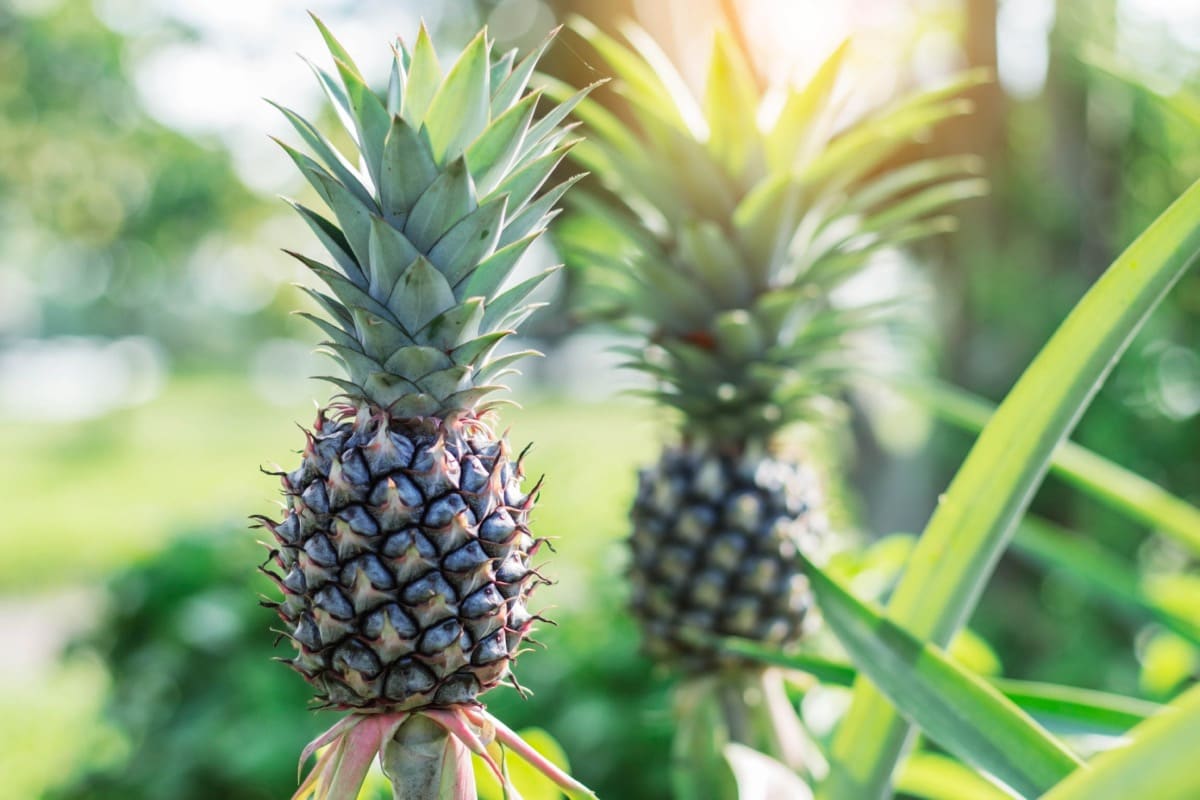
In modern agriculture, farmers have started producing profitable crops, keeping in mind the market demand. One of these high-profit crops is pineapple, which has a high market demand due to its taste and nutritional content. This fruit is consumed both fresh and preserved according to different dishes. This way, the cultivation of Pineapple can prove to be a lucrative business for the farmers.
Introduction
The pineapple plant is a cactus species, and its scientific name is Ananas comosus. Moreover, it is an edible tropical plant. It is originally a fruit of Paraguay and southern Brazil. It is an edible plant with origins from Paraguay and southern Brazil. It is mostly eaten freshly cut but can be preserved for later use as well.
Nutrients Found In Pineapple
One cup (in 165 grams) of pineapple slices has:
- Calories 82.5
- Fat 1.7 grams
- Protein – 1 gram
- Fiber – 2.3 grams
- Carbohydrates – 21.6 grams
- Vitamin – 131%
- Vitamin B – 69%
- Copper – 9%
- Folate – 7%
- Potassium – 5%
- Manganese – 5%
- Iron – 3%
Benefits
Pineapple is a rich source of vitamin C and antioxidants. Its consumption improves immunity and protects from diseases such as the common cold. Also, pineapples detoxify the body with the help of its chlorine content. Along with this, it is highly beneficial in bile disorders and jaundice.
Cultivation
This fruit is grown mainly in Kerala, Andhra Pradesh, Tripura, West Bengal, Assam, and Mizoram in India. Farmers of Madhya Pradesh, Bihar, and Uttar Pradesh have also started producing it. Furthermore, it is cultivated throughout the year in Kerala, Andhra Pradesh and West Bengal.
Improved Varieties For Pineapple Farming
There are many varieties of Pineapple in India, but Giant Q, Queen, Red Spanish, and Mauritius are the popular ones. Moreover, the Queen variety of Pineapple is a very early ripening variety. The Giant Cuis variety is cultivated as a late crop. On the other hand, Red Spanish has a very low chance of diseases. This variety is used as a fresh fruit and is an exotic variety.
Cultivation Step-By-Step Guide
Pineapples have many commercial uses, which makes them a profitable crop. With proper caring and correct farming techniques, farmers can generate higher income.
Let’s look at the complete steps for pineapple production.
Climate For Cultivation Of Pineapple
A moist (humid) climate is required for the cultivation of Pineapple. Its plants require 100-150 cm of rainfall, and it cannot tolerate high heat or frost. At the same time, 22°C to 32°C temperature is suitable. Moreover, there should be at least a 4°C difference in temperature between day and night.
Suitable Land
For the cultivation of Pineapple, sandy loam soil or sandy loam with high organic matter is ideal. It should not be cultivated on waterlogged land, and the soil pH value should be between 5 and 6.
Farming Suitable Season
It can be cultivated twice a year. The first season lasts from January to March, and the second season lasts from May to July. On the other hand, in areas with a moderately warm climate with moisture, it can be cultivated throughout the year.
Pineapple Farming Field Preparation
Pineapple farming requires a deep ploughing of the field during summer. Also, farmers prefer a New Holland 3600 tractor for field preparation. The next step is to add rotted manure of cow dung in the field and mix it in the soil. Along with this, make the soil friable by running a rotavator in the field.
Planting Method
Pineapple transplanting is done between December and March in most areas, but it can be changed according to the climate. Moreover, transplantation is not recommended during heavy rainfall.
After preparing the field, make deep trenches for transplanting with the help of the Mahindra 575 tractor. Before planting, treat them with 0.2% diethane M45 solution. The distance between each plant should be 25 cm, and the distance between each row should be 60 cm.
Dosage Of Fertiliser
When ploughing the field, the rotten manure of cow dung, vermicompost or any organic waste should be mixed in the soil. Apart from this, 680 kg of ammonium sulphate, 340 kg of phosphorus and 680 kg of potash should be applied twice a year as chemical fertilisers to the pineapple plants.
Irrigation
If the plant is planted in the rainy season, it does not require much irrigation. Also, drip irrigation methods are most suitable for a higher yield. Moreover, irrigation should be continued at an interval of 10-15 days after the plants germinate.
Cost And Earnings
Farmers can plant 16 to 17 thousand saplings in one hectare of field to obtain 3 to 4 tons of Pineapple. One fruit weighs about 2 kg, which easily gives Rs. 150 – 200. It is also in great demand in the processing industries because it is sold canned and in the form of juice. This makes it a profitable option for commercial cultivation.

Tech Hub Digital, a one-stop destination for complete technology-related information.

